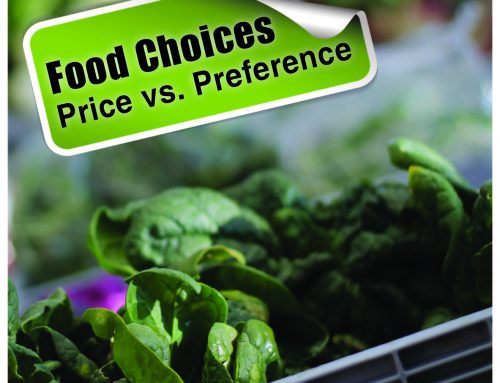By Jessica Domel
I absolutely love cooking, but going to the grocery store stresses me out.
I live in a community where the organic section of the grocery store is so large that it makes searching for traditionally-grown produce feel like an Easter egg hunt.
It literally took me at least 10 minutes one day to find traditionally-grown spinach. I found the variety of organic blends right away, but the more affordable, traditionally-grown spinach was hiding over by the seafood freezers behind a cart of other produce.
To me, it’s a sign of the growth of the organic food trend in parts of our country. In fact, a report from the Organic Trade Association states that the organic food sector grew by $2.5 billion during 2011. Almost half of that is attributed to the sale of fruits and vegetables. The report also states that despite the rise in its popularity, only 4.2 percent of all food sold in 2011 was organic.
Grocery stores are meeting a growing demand, so they charge more for organic and give them the premium space on the produce aisle. I have to look for the traditionally-grown produce.
While I understand some people’s rationale behind buying organic, I just can’t make myself pay the higher prices for the produce on my shopping list.
Fruits and vegetables take up a large chunk of my shopping list. If I were to buy everything organic, they’d also take up a huge chunk of my paycheck, and I don’t see the need for that.
I can’t taste the difference between fresh organic or fresh traditional. Studies show there is no nutritional difference. And studies show that there is no food safety advantage in eating one over the other. Of course, you should wash any produce thoroughly—either organic or traditional.
Personally, some days I’m just proud that I’m eating fresh fruits and vegetables as it is.
Maintaining a well-balanced diet is very important to me, but so is remaining financially stable.
Everyone has their preferences and I don’t begrudge anyone who shops organic. And I salute the organic farmers for filling a growing niche market. It just doesn’t fit my lifestyle…or pocketbook.
So if you see me wandering around a Waco-area H-E-B with a confused look on my face, don’t worry. I’ll find my way–it may just take a minute or 10.











Thanks for your article. I thought I was the only one wandering the produce section. I look forward to your articles, you always put a smile on my face.
Thanks.
Thank you! I’m so glad I’m not alone!
Interesting and amusing post. Since you have referred to the relative merit of organic food, though, I should point out that the Stanford study does acknowledge some differences that distinguish organic from conventional. For example:
“…What’s more, as the researchers noted, the pesticide levels of all foods generally fell within the allowable safety limits. Two studies of children consuming organic and conventional diets did find lower levels of pesticide residues in the urine of children on organic diets, though the significance of these findings on child health is unclear. Additionally, organic chicken and pork appeared to reduce exposure to antibiotic-resistant bacteria, but the clinical significance of this is also unclear.
While the Stanford report describes its findings with an seeming bias toward conventionally grown produce, as a consumer, the fact that “(to paraphrase) kids on a conventional diet are shown to have more pesticides and antibiotic resistant bacteria in their bodies” is nothing if not a red flag.
I should add that I found your blog because I am suspicious of some of the claims of anti-Monsanto and anti-GMO groups, and seek more information that sounds logical and less like propaganda. The Stanford study unfortunately did not fall into this category. I will continue my search and look forward to looking at your blog more as well.